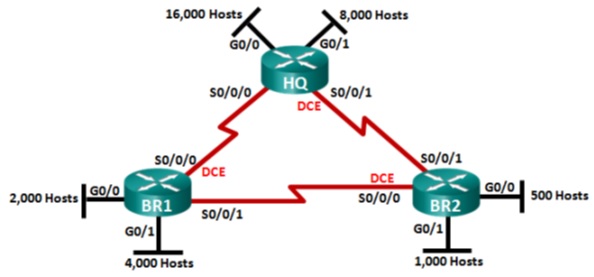Reference no: EM132955574
Assessment - Networking Fundamentals
Task
This assessment aims to develop and gauge student understanding of the key topics covered so far by answering the following questions. Answering these questions will help you build some understanding for the next assessment item as well as for the entire subject. It is expected that answers to the assignment questions be succinct (i.e. precise and concise) with all sources of information fully referenced as per APA referencing style. You have to reference the text book and any additional material you have used in your answers.
Note that the guide for APA referencing is provided in the resources section of Interact site of this subject.
Question 1
Write functions of each layer of OSI reference model, also differentiate between hardware and software layers. Explain your view; why Network layer of OSI model is called Internet layer in TCP/IP networking model?
Question 2
Complete the following Hands-On Projects from the prescribed textbook (Pyles, Carel & Tittel 2017)
Hands-On Project 2-3
Hands-On Project 3.2
In order to complete this activity, students should insert screenshots in the assignment document along with a short description of each step taken to complete the project.
Question 3
For any data communication, MAC and IP addresses play very important role, explain why these two types of address are important and what critical role ARP protocol plays in this scenario?
Question 4 Case study task

In your role as a Solutions Architect at Foreshore IT Solutions, you are leading a team of several system administrators. Foreshore IT Solutions is a large organisation and is currently expanding its operations. The company was using six sites across Brisbane to accommodate its various departments. These departments are interconnected by three routers.
Company's current network is shown as above, which include following departments at various
sites:
Recently, company has experienced huge growth in their business, and need to employ more employees who will need more devices (hosts). Company is expecting 40% growth.
You are required to recalculate IP addressing scheme for this network to accommodate 40% growth, for example; Sales department will grow by 6400 hosts. Also provide subnets for inter router connections which should have subnet mask 255.255.255.252
Use network ID 180.XY.0.0/16 (where XY are last digits of your student ID).
TASK - Write a 800 words (+/- 10%) (Max) report explaining:
• The detailed design of a simple addressing solution (with diagram(s) and step by step workout of the calculations) that accommodate for growth, is easy to administer and has the minimum wastage of available IP address space.
• Provide IP addresses and Subnet Masks for all LAN and WAN interfaces.
• Suppose in further future, this company experience more growth, which leaves company with no option except upgrading this network from IPv4 to IPv6, investigate/ explore the technical changes you may need to implement for such upgrade
Rationale
This assessment aims to assess the following learning objectives of this subject:
• be able to analyse IP addressing requirements and design an addressing scheme;
• be able to analyse the requirements of IP routing and choose appropriate routing methods;
• be able to demonstrate how internetworking devices obtain their network configuration;
• be able to explain how data flows through the internet; and
• be able to ascertain and evaluate selection of applications and protocols for transferring data across the internet
Rationale
This assessment task will assess the following learning outcome/s:
• be able to analyse IP addressing requirements and design an addressing scheme.
• be able to analyse the requirements of IP routing and choose appropriate routing methods.
• be able to demonstrate how internetworking devices obtain their network configuration.
• be able to explain how data flows through the internet.
• be able to ascertain and evaluate selection of applications and protocols for transferring data across the internet.
This assessment aims to assess the following learning objectives of this subject:
• be able to analyse IP addressing requirements and design an addressing scheme;
• be able to analyse the requirements of IP routing and choose appropriate routing methods;
• be able to demonstrate how internetworking devices obtain their network configuration;
• be able to explain how data flows through the internet; and
• be able to ascertain and evaluate selection of applications and protocols for transferring data across the internet.
Attachment:- Networking Fundamentals.rar